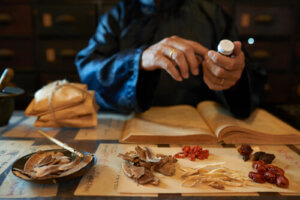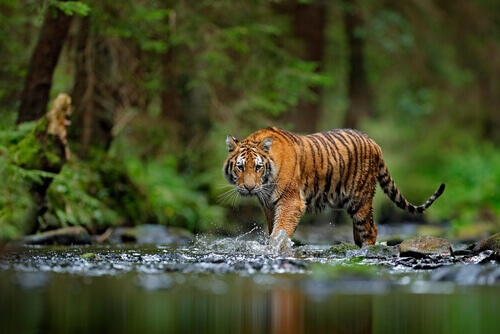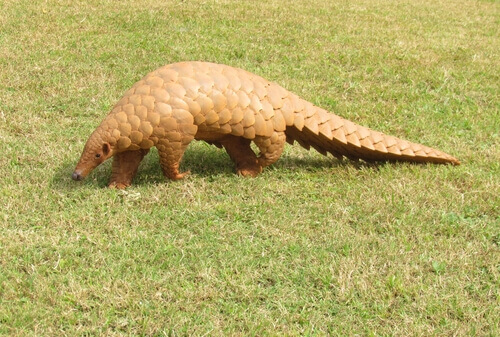Oriental Treatments that Endanger Animals


Written and verified by the vet Eugenio Fernández Suárez
China has increased its purchasing power and, with that, there has been an increase in animals endangered by oriental treatments. More and more people have access to supposedly ancient and infallible treatments that use the body parts of endangered animals.
Unfortunately, this 3,000-year-old medicine is also becoming trendy in Europe. And treatments to make our energy flow with tiger bones or rhinoceros horn are on the rise. As a result, the threat to these species is increasing.
The truth is that there are many animal species that oriental treatments put to use. From cows to scorpions and from snakes to seahorses. The use of these products has no scientific basis. And, although many of them aren’t harmful, they replace effective treatments. What’s more, they cause the extinction of species. In short, many oriental treatments endanger animals.
Rhinoceroses, in the spotlight
Asian rhinoceroses have suffered from hunting for millennia, mainly to obtain parts of their anatomy. Their horns are especially famous and can now fetch up to 50,000 euros per kilogram.

It’s true that the white rhino recovered from extinction. However, following the recent disappearance of the northern subspecies and the growing demand for rhino horn, many fear that rhinos are doomed by human ignorance.
Big cats: the case of the tiger
One of the animals endangered by oriental treatments is the tiger. This is one of China’s most emblematic animals and oriental medicine uses almost all a tiger’s parts. Especially the bone, as tiger bones can fetch up to 400 dollars per kilogram.

Unfortunately, this has led to the breeding of tigers as if their bodies were intended to be cut up from birth. In addition, the delicate situation of the tiger in the wild – there are only 3,000 specimens left – has led to other more abundant big cat species, such as lions or jaguars, replacing it.
These tiger and lion farms have found a veritable bonanza by breeding felines as if they were cattle. In the case of Africa, it’s devastating, as many tourists believe the lie that they’re in sanctuaries. They can pet the cubs, which, when they grow, work by going for walks with visitors.
It’s vitally important to be suspicious when any zoo or “sanctuary” allows visitors to pet or care for baby cats. Be wary of any attraction that promises interactions with wild animals.
When the animals are adults, they have two fates. The more spectacular males are auctioned off for hunting, while the females are often used to make rice wine. This is a status symbol in China, which is simply wine macerated with tiger or lion bones.
Bears, another major casualty
In the case of bears, many parts of their anatomy end up in the trash. However, bile has become one of the most sought-after resources in oriental medicine This is especially true regarding bear species such as Malay and black bears.

Again, farms breed these species by the hundreds with the aim of milking the small amount of bile the gall bladder produces. On the black market, even small amounts sell for a fortune. These bears live in tiny cages, so they grow up with bone and muscle malformations. Breeders aren’t worried about this, as their bones are worthless.
The pangolin, the most endangered animal
Of all the animals that oriental treatments endanger, the pangolin is the species that these practices endanger the most. On this occasion, keratin once again proves to be ineffective as a treatment. But its profitability for poachers is enormous.

Poachers seize tons of the scales of these animals and pile them onto ships. In fact, they can kill 20,000 specimens in a single warehouse. The fact is that a kilogram of scales can easily earn them 3,000 euros.
Despite the enormous degree of protection that this species enjoys, experts believe that more than 100,000 pangolins fall to hunting every year. This simply consists of catching and killing them, since their protection is to curl up on themselves and stay still.
The eccentricities with the consumption of parts of these species border on the absurd. Soups containing tiger penis or pangolin fetus promise to increase your virility in an almost miraculous way. Of course, any educated person would shake their head at these claims.
The shark, the most abused
Sharks around the world have gone from predator to prey. The shark’s body is worthless, so fishermen cut off their fins and throw them back into the sea, where they slowly die. The fins are worth up to 30 times more than the meat, so sharks are condemned to die in agony for shark fin soup.

Although shark fin also has supposed beneficial properties, the truth is that it’s an example of how many of these gastronomic and medicinal eccentricities are actually for the sake of status. Sadly, sharks, tigers, bears, and other animals endangered by oriental medicine are actually endangered by ignorance and power.
Unfortunately, many species of sharks, such as the blue shark, are brought from other countries like Spain, which participate in this dark business. Although fishing there is done in an ethical way, the sale of fins to China after the death of the animal promotes ridiculous beliefs, and, of course, it enriches the coffers of European companies.
China has increased its purchasing power and, with that, there has been an increase in animals endangered by oriental treatments. More and more people have access to supposedly ancient and infallible treatments that use the body parts of endangered animals.
Unfortunately, this 3,000-year-old medicine is also becoming trendy in Europe. And treatments to make our energy flow with tiger bones or rhinoceros horn are on the rise. As a result, the threat to these species is increasing.
The truth is that there are many animal species that oriental treatments put to use. From cows to scorpions and from snakes to seahorses. The use of these products has no scientific basis. And, although many of them aren’t harmful, they replace effective treatments. What’s more, they cause the extinction of species. In short, many oriental treatments endanger animals.
Rhinoceroses, in the spotlight
Asian rhinoceroses have suffered from hunting for millennia, mainly to obtain parts of their anatomy. Their horns are especially famous and can now fetch up to 50,000 euros per kilogram.

It’s true that the white rhino recovered from extinction. However, following the recent disappearance of the northern subspecies and the growing demand for rhino horn, many fear that rhinos are doomed by human ignorance.
Big cats: the case of the tiger
One of the animals endangered by oriental treatments is the tiger. This is one of China’s most emblematic animals and oriental medicine uses almost all a tiger’s parts. Especially the bone, as tiger bones can fetch up to 400 dollars per kilogram.

Unfortunately, this has led to the breeding of tigers as if their bodies were intended to be cut up from birth. In addition, the delicate situation of the tiger in the wild – there are only 3,000 specimens left – has led to other more abundant big cat species, such as lions or jaguars, replacing it.
These tiger and lion farms have found a veritable bonanza by breeding felines as if they were cattle. In the case of Africa, it’s devastating, as many tourists believe the lie that they’re in sanctuaries. They can pet the cubs, which, when they grow, work by going for walks with visitors.
It’s vitally important to be suspicious when any zoo or “sanctuary” allows visitors to pet or care for baby cats. Be wary of any attraction that promises interactions with wild animals.
When the animals are adults, they have two fates. The more spectacular males are auctioned off for hunting, while the females are often used to make rice wine. This is a status symbol in China, which is simply wine macerated with tiger or lion bones.
Bears, another major casualty
In the case of bears, many parts of their anatomy end up in the trash. However, bile has become one of the most sought-after resources in oriental medicine This is especially true regarding bear species such as Malay and black bears.

Again, farms breed these species by the hundreds with the aim of milking the small amount of bile the gall bladder produces. On the black market, even small amounts sell for a fortune. These bears live in tiny cages, so they grow up with bone and muscle malformations. Breeders aren’t worried about this, as their bones are worthless.
The pangolin, the most endangered animal
Of all the animals that oriental treatments endanger, the pangolin is the species that these practices endanger the most. On this occasion, keratin once again proves to be ineffective as a treatment. But its profitability for poachers is enormous.

Poachers seize tons of the scales of these animals and pile them onto ships. In fact, they can kill 20,000 specimens in a single warehouse. The fact is that a kilogram of scales can easily earn them 3,000 euros.
Despite the enormous degree of protection that this species enjoys, experts believe that more than 100,000 pangolins fall to hunting every year. This simply consists of catching and killing them, since their protection is to curl up on themselves and stay still.
The eccentricities with the consumption of parts of these species border on the absurd. Soups containing tiger penis or pangolin fetus promise to increase your virility in an almost miraculous way. Of course, any educated person would shake their head at these claims.
The shark, the most abused
Sharks around the world have gone from predator to prey. The shark’s body is worthless, so fishermen cut off their fins and throw them back into the sea, where they slowly die. The fins are worth up to 30 times more than the meat, so sharks are condemned to die in agony for shark fin soup.

Although shark fin also has supposed beneficial properties, the truth is that it’s an example of how many of these gastronomic and medicinal eccentricities are actually for the sake of status. Sadly, sharks, tigers, bears, and other animals endangered by oriental medicine are actually endangered by ignorance and power.
Unfortunately, many species of sharks, such as the blue shark, are brought from other countries like Spain, which participate in this dark business. Although fishing there is done in an ethical way, the sale of fins to China after the death of the animal promotes ridiculous beliefs, and, of course, it enriches the coffers of European companies.
This text is provided for informational purposes only and does not replace consultation with a professional. If in doubt, consult your specialist.








